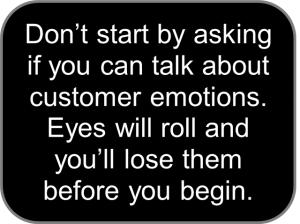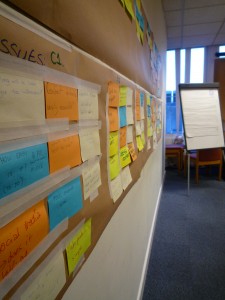John Lewis, npower and Ford – in very different places with customer experience
Depending on the way you look at it, complacency is either the arch-enemy of customer experience or the reason it exists. I’ve seen many a sceptical director shrug and say “Why bother? We’re making money so we must be doing it right”.
Yet while the heart of customer experience might be more a way of thinking than functional, the warning signs of where it’s going wrong can be very obvious and very tangible.
Take John Lewis. Over the years it’s been one of our most celebrated brands, synonymous with straightforward, easy and helpful customer experiences. And the partnership has seen the benefits in its commercial performance as a result.
So here’s a question: out of 10, where 0 is rubbish and 10 is brilliant, what would you say JohnLewis.com scores on Trustpilot at the moment? I know there have been a few issues of late but I’d have said 7s and 8s at worst. Time to think again.
Based on over 2,000 customer reviews the average score as of this week is ….. 1.4 out of 10.

How and why did that happen? Only those inside John Lewis know the answers but one suggestion is the outsourcing of its customer experiences. Handing over your brand to a third party is no excuse, only a reason. Outsourcing may promise hand-offs that are invisible to customers and a lower per-transaction cost. However, without the controls to ensure consistency of the intended experiences the number of unnecessary contacts increase, the costs go up and customers’ loyalty goes down. Years of goodwill being unravelled for all to see.
As with any customer measurement system, there are caveats and foibles. But I wonder how many organisations would act differently if public metrics such as the Trustpilot score or Tripadvisor rating were more visible internally and part of the voice-of-the-customer mix.
Ironically, over in the energy sector, npower maybe further along the organisational self-awareness curve. It’s often in the news for the wrong reasons; scrapping its dividend payment, being fined £26m by Ofgem for failing to treat customers fairly and being told if things don’t improve they will be barred from selling their services. And on the back of its results this week came the announcement that there will be a significant human cost with 20% of its workforce to be laid off.
With that news though came a plan, a two-year recovery programme. So for npower, at least the reasons for its difficulties are known and it is trying to do something about them. Lower wholesale energy prices, government obligations and a quicker than expected shift to renewables are to blame in part. However, it is the self-inflicted broken processes and billing infrastructure that are driving many customers away.
I’m a customer of npower and of John Lewis. For the people who work there and for my own sanity I really want them to come right. Npower has plans but the signs are that things have a way to go. For example, I recently received three identical envelopes in the same post. Inside, three identical annual statements with identical supporting information notes – tripling the cost at a stroke and leaving me playing the spot-the difference, wondering if I’ve missed something subtle but vitally important.

Do they know that’s happening? If not, why not? But if they do know, wouldn’t a quick letter or email to explain that I don’t have to worry about missing something help? It’s about knowing what the experience is like today and how it feels compared with what it should be like and having the appetite to do something about it. Making things worse, the main call-to-action appears to be to switch suppliers so exactly what the statements mean and what I’m supposed to do next will have to be the subject of a call to their helplines… I hope the recovery plan will be using lower customer effort as a measurement of success.
In contrast, the organisational self-awareness that Ryanair had prompted it to launch the ‘Always Getting Better’ programme. The about-turn in being customer focused is bearing fruit in its forward bookings, load factors and customer feedback. Meantime, motoring giant Ford meantime is also setting about the way it does things.
Speaking earlier this year, Ford’s President and CEO Mark Fields talked openly about changing the culture to be more empathetic to its customers. The mindset was no longer one of being a manufacturer or even a technology company but an innovative, user-experience company. Ford employees are encouraged to challenge the status quo, to question tradition and to not take anything for granted. They won’t get penalised in their performance reviews for trying something new; the view is that succeed or fail, you learn. And on digitalisation and data, Ford aims to identify the right experiences first then seeks the technology to deliver it. Not, trip over itself to install latest IT systems just because it’s the latest IT system.
Very familiar brand names with varying degrees of organisational self-awareness. It’s what shapes their customer experiences and as a direct consequence they will see very different results.
Thank you for reading the blog, I hope you found it interesting and thought-provoking. I’d love to hear what you think about the subject so please feel free to add your comments below.
I’m Jerry Angrave, founder of Empathyce and an ex-corporate customer experience practitioner. I’m now a CX consultant and an official trainer for the CXPA’s professional qualification to be a CCXP. If you’ve any questions about improving customer experiences or CX professional development do please get in touch. I’m on +44 (0) 7917 718 072 or on email I’m [email protected].
To subscribe for future posts please send an email to [email protected]










